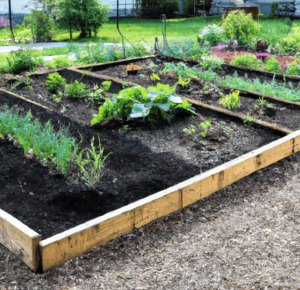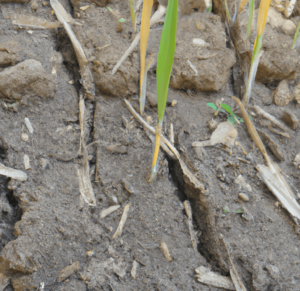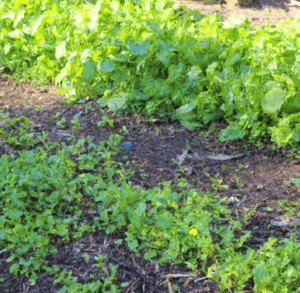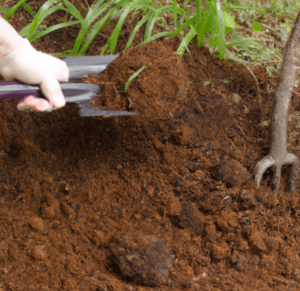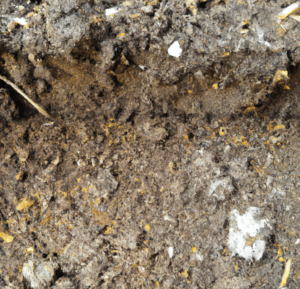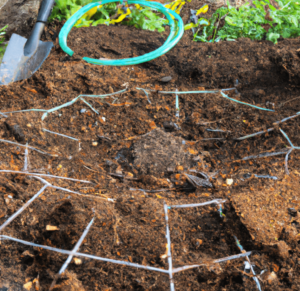Successful gardening depends on the soil’s moisture level, which controls how much water is present in the soil and influences plant development and health. Without enough moisture, plants won’t be able to absorb the necessary nutrients, which could restrict their growth and even cause them to die. Plants require water to grow and carry out photosynthesis. Understanding the unique requirements of the plants, the soil type, and the temperature in the garden are necessary for maintaining the ideal soil moisture levels. Root rot or drought stress can result from overwatering or underwatering, respectively. Here’s everything you need to know about the importance of soil moisture in gardening.
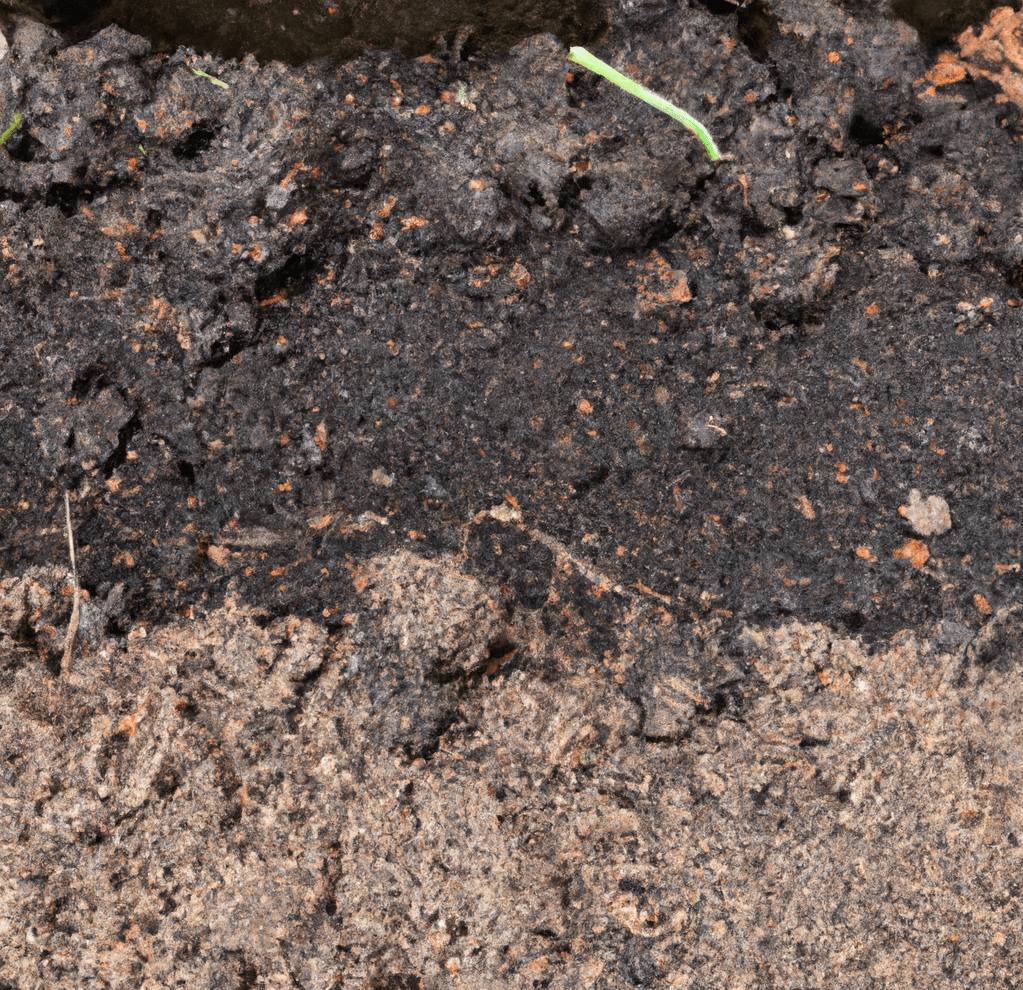
Understanding Soil Moisture
The importance of soil moisture in gardening is varied but it greatly impacts plant growth. It’s essential for a plant’s life, especially in the hottest temperatures, and relates to the quantity of water contained in the soil. The right quantity of moisture is necessary for a plant to flourish, yet too much moisture can result in root rot while not enough moisture will make the plant wilt and eventually die. Rainfall, temperature, soil type, and the amount of water the plant needs to survive can all have an impact on the moisture content of the soil. It’s crucial for gardeners to routinely check and water their plants since in the hottest temperatures, the soil moisture level can drop quickly.
When growing plants, it’s essential to understand the soil moisture level because it has a big impact on their development and general health. For instance, soil texture is also important in plant growth, and too much dry soil can cause stunted growth, wilting, and leaf yellowing. On the other side, too much moisture in the soil can cause root rot, a reduction in oxygen, and ultimately plant death.
Definition of Soil Moisture
Before we learn more about the importance of soil moisture in gardening, let’s learn about what this means. The amount of water in the soil is referred to as soil moisture. It has a significant impact on the water supply that plants’ roots can access, which is essential for their growth and survival. It’s a crucial element of soil fertility and is used to calculate the ideal water requirement for plant growth.
Numerous variables, including rainfall, temperature, and evaporation, have an impact on soil moisture. The ideal soil moisture level depends on the type of plant and its growth stage. Soil moisture levels can range from extremely dry to extremely wet. While too much soil moisture can result in root rot and other issues, too little soil moisture can stress plants and restrict their ability to thrive which is why understanding and using soil amendments in your garden may be necessary.
Factors Affecting Soil Moisture
The importance of soil moisture in gardening is emphasized in agriculture, horticulture, and forestry because soil moisture influences plant development, health, and productivity. Numerous environmental, physical, and biological elements have an impact on the soil’s moisture content:
- Precipitation: A significant element affecting soil moisture content is the amount of rain or snowfall that a location receives. Higher precipitation causes soil moisture to rise, and lesser precipitation causes soil moisture to fall.
- Evaporation: Another important element impacting soil moisture content is the rate at which water evaporates from the soil surface. Strong winds, low humidity, and hot weather can promote evaporation, which lowers soil moisture.
- Transpiration by plants: Soil moisture is also impacted by plants’ transpiration and water uptake processes. Plants draw moisture from the soil, which lowers soil moisture levels overall and in the root zone in particular.
- Soil texture: Soil moisture content is also influenced by the texture of the soil. Compared to soils with high clay or organic matter concentration, soils with a high sand content typically have reduced moisture retention.
- Structure: Moisture in the soil is also influenced by the porosity of the soil and other aspects of its structure. Good-structured soils can contain more water and can hold onto moisture for a longer period of time.
Climate
Climate plays a significant role in determining the health and development of plants in gardens. Gardeners should take the local climate into account while planning and maintaining their gardens after learning about the importance of soil moisture in gardening.
Gardeners must go above and above to make sure their plants receive enough moisture if the climate is dry. This can entail giving their plants regular waterings, amending the soil with mulch, and changing the plants they decide to grow. On the other hand, gardeners must take precautions in regions with heavy rainfall to avoid the soil being soggy, which can cause root rot and other problems for plants. Healthy plants are better equipped to endure the effects of pests, disease, and climate change thanks to proper moisture management.
Soil Type
Because it serves as the substrate for plants’ growth and development, the soil is an essential component of farming and gardening. For optimum plant growth and upkeep, it is crucial to understand the type of soil in your garden or farm and the importance of soil moisture in gardening.
Plant growth is influenced by the structure, nutrient content, and water retention properties of various soil types. Regarding soil type, watering is a vital factor to take into account. For instance, clay soil retains water for a longer period of time and plants may require less watering than sandy soil since it drains more quickly. You can make educated choices regarding how frequently and how much water to use by being aware of the watering needs of your soil type.
When it comes to soil type, it’s always a good idea to consult experts. Your soil’s type, quality, and recommendations for enhancing its fertility and structure can all be determined with the assistance of soil experts. They can also offer suggestions on the kinds of plants that will flourish in your soil and give instructions on how to keep them healthy over time.
Plant Type
A significant element that influences plant development and survival is soil moisture. The best soil moisture levels may depend on the kind of plant being grown. While certain plants, like ferns, need continually moist soil to exist, others, like succulents, are evolved to flourish in arid environments with little rainfall.
In order to ensure your plants’ health and correct growth, it’s crucial to understand the importance of soil moisture in gardening and your plants’ requirements.
- The soil should generally be kept equally moist but not soggy.
- Underwatering can cause the plant to droop and finally die while overwatering can result in root rot.
- It’s crucial to routinely evaluate the soil’s moisture content and modify your watering practices as necessary.
- When selecting plants for your yard or indoor space, it’s vital to keep in mind that different plant types have varying moisture requirements. For instance, ferns and other plants that prefer shade often demand continually moist soil, whereas cacti and succulents typically require well-drained soil with rarely watering.
You may grow a robust and healthy indoor or outdoor garden by choosing the proper plants and pairing them with the ideal soil moisture conditions.
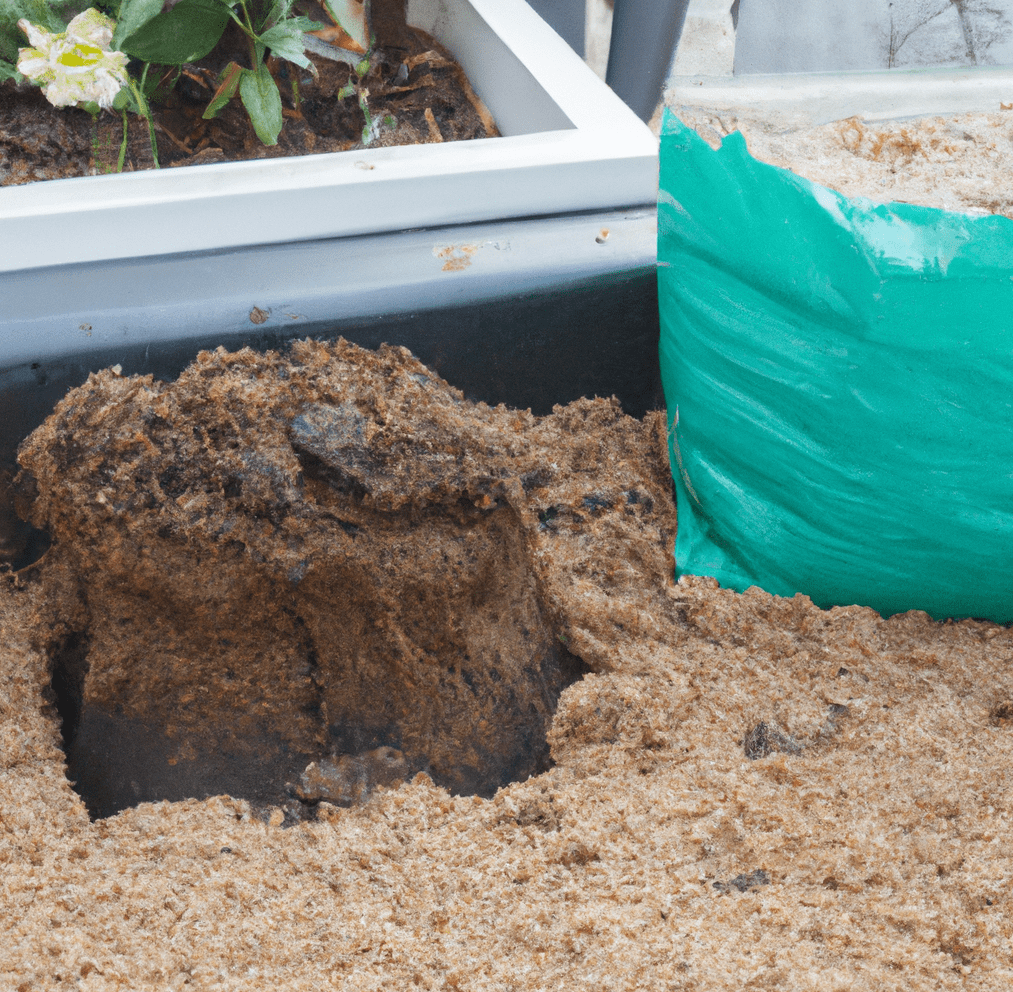
Watering Practices
Watering techniques play a significant part in soil management and are essential to the health and growth of plants. Plant type, climate, and soil are just a few of the variables that affect how and how often plants need to be watered.
Generally speaking, after the importance of soil moisture in gardening, it’s crucial to ensure that the soil is moist but not waterlogged, as this might result in root rot and other issues. In comparison to plants in cooler, moister climes, plants in hot, dry climates may require more regular watering.
When watering plants, it’s crucial to take the time of day into account in addition to watering. It’s advised to water plants in the morning or evening so that the roots have time to absorb the water before the sun gets too hot and evaporates it. On the development and well-being of plants, correct watering techniques can improve soil management. This is because regular watering encourages the development of strong roots, which in turn aids a plant’s ability to absorb water and nutrients from the soil.
Importance of Maintaining Appropriate Soil Moisture Levels
Plant development and survival are highly dependent on the moisture content of the soil. The ability of roots to absorb water and nutrients is highly influenced by the amount of moisture in the soil, which can result in either healthy growth or inhibited development.
Plants can wilt and get stressed when the soil is excessively dry, especially in the hottest months when water quickly evaporates from the soil. On the other hand, excessively damp soil may result in saturated roots, which may result in root rot and other issues.
In order to guarantee that plants receive the proper amount of water to support their growth and health, you need to learn about the importance of soil moisture in gardening to maintain adequate soil moisture levels. Gardeners and farmers may encourage healthy plant growth, boost yields, and enhance overall crop quality by closely monitoring soil moisture levels and modifying irrigation strategies accordingly. The optimum soil moisture is crucial to ensuring that your plants receive the proper amount of moisture to thrive, whether you are producing veggies, flowers, or other plants.
Impact of Soil Moisture on Plant Growth
Learning about the importance of soil moisture in gardening is important because a plant’s water content is essential because it influences how well key nutrients are absorbed, which in turn affects growth and health in general.
Numerous elements, including soil type, climate, plant species, and soil management techniques, can affect the moisture content of the soil. The ability of a soil to retain water varies depending on its nature, with loam and clay retaining more water than sandy soils. Particularly in hot, dry climes, climate factors like temperature and rainfall can have a significant impact on soil moisture levels.
Different plant species can be more or less sensitive to variations in soil moisture levels and have variable water requirements. Irrigation and tillage are two soil management techniques that can influence soil moisture levels and have an impact on plant development. Successful plant growth and crop production depend on an understanding of how soil moisture affects plant growth and the variables that affect it.
Effects of Too Much Water
After learning about the importance of soil moisture in gardening, you may overwater your plants by accident. Numerous issues, such as root rot, fungal development, and nutrient loss, can arise from soil that is consistently damp:
- Excessive irrigation can result in soggy roots, which can develop into root rot. The plant may find it challenging to absorb water and nutrients if the roots rot and die as a result of this. As a result, the plant may eventually become yellow and stunted.
- Overwatering can also promote fungal growth by creating an atmosphere that is favorable for it. Fungi are capable of causing infections that are challenging to treat and thrive in damp, poorly drained soils. Leaf spots, blights, and other issues brought on by fungi can weaken or destroy a plant.
- When soil is consistently wet, nutrients can escape and be wasted. Nutrient deficits could occur from this, which could lead to stunted growth, yellowing leaves, and other issues. Water plants only when necessary, and let the soil become a little bit dry in between applications, to prevent nutrient leaching.
Effects of Too Little Water
You may also underwater your plants after learning more about the importance of soil moisture in gardening. Numerous issues that may impede the growth and general health of the plants may arise when the soil moisture levels fall too low. Among the most typical consequences of insufficient water intake are:
- Wilting: The plant’s capacity to absorb water from the roots is diminished as the soil moisture levels decrease. The plant may wilt and appear limp and dead as a result of this.
- Leaf Drop: Plants may start to lose their leaves if the soil moisture levels are low for an extended length of time. The plant can retain moisture thanks to this survival mechanism.
- Reduced Growth: Plants can’t develop correctly without enough water. Their leaves and blooms will be smaller and less colorful, and they won’t grow to their full height. The plant may also not develop as deep roots, making it more susceptible to environmental stresses.
To avoid these detrimental consequences, it’s critical to constantly check the soil moisture levels in your garden and give your plants enough water. A garden needs the right amount of moisture to be healthy and flourish.
How to Determine Appropriate Soil Moisture Levels for Specific Plants
You can figure out the ideal soil moisture levels for particular plants:
- Think about the plant’s native environment: Plants from arid or drought-prone areas are accustomed to dry soils and need less water. Plants from moist or humid areas, however, might need to be watered more frequently.
- Keep an eye on the weather: More regular watering is necessary during the warmest and driest months of the year, while less frequent watering may be necessary during cooler and rainier months.
- Watch how the plant is developing: More water will be required by plants growing in sunny, well-drained soils compared to those growing in shady or poorly drained locations.
- Pay attention to the stages of plant development: More frequent watering will be needed for young, newly planted trees and shrubs than for mature ones. Similar to animals, plants need more moisture when they are actively growing and putting out new leaves than when they are dormant or in decline.
You can ensure that your plants get the right quantity of water to support healthy growth and avoid harm from either overwatering or underwatering by taking these considerations into consideration.
Techniques for Managing Soil Moisture
You can increase plant growth, increase resource efficiency, and improve water retention:
- By covering the soil’s surface with organic material like leaves, grass clippings, or bark, a practice known as mulching is used. It helps to control soil temperature, stop water evaporation, and keep moisture in the soil.
- Plant irrigation systems are a typical way to irrigate plants. It is possible for them to be automatic, semi-automatic, or manual, and they give gardeners the ability to regulate the quantity and frequency of watering their plants.
- Drip irrigation is a technique for delivering water directly to a plant’s root zone or the part of the soil where roots develop. It is a very effective method of watering plants since it minimizes water waste and aids in preserving the moisture level of the soil.
- Techniques for retaining water include adding organic matter to the soil, burying compost, and utilizing cover crops. By using these techniques, the soil may hold more water while losing less water to evaporation.
These methods allow farmers and gardeners to control soil moisture properly and make sure that their plants get the water they require to grow and thrive.
Bottom Line: The Importance of Soil Moisture in Gardening
For gardening and plant growth to be successful, soil moisture is essential. Plants obtain the essential amount of water to live and promote healthy development when the soil is properly moistened. In order to nourish the root system and sustain ideal growing conditions for plants, the soil must have a suitable amount of moisture. It’s critical to monitor and control soil moisture levels for the best possible plant growth after learning about the importance of soil moisture in gardening.
This can be achieved using a variety of methods, including routine irrigation, mulching to maintain moisture, and soil testing to detect whether it is too dry or too wet. Water conservation, which is crucial as water supplies become scarcer, can also be aided by using the right watering methods and schedules.
FAQs on The Importance of Soil Moisture in Gardening
What does soil moisture mean?
The amount of water in the soil is referred to as soil moisture. It has an impact on the water supply that is accessible to plant roots, which is crucial for plant growth and survival.
What elements affect the moisture of the soil?
A number of environmental, physical, and biological factors, such as precipitation, evaporation, plant transpiration, soil texture, structure, and climate, can have an impact on soil moisture.
What effect does soil moisture have on the growth and development of plants?
Plant growth and development are significantly impacted by soil moisture. While too little moisture can stress plants and limit their ability to develop, too much moisture can cause root rot and other problems.
How does soil type affect plant development and soil moisture?
The type of soil can affect the soil’s capacity to retain water, which in turn affects soil moisture levels and plant development. Sandier soil drains more quickly and may need more frequent watering, but clay soil holds onto the water for a longer amount of time and needs less watering.
How does the weather affect plant development and soil moisture?
Both the health and development of plants as well as the amount of soil moisture are significantly influenced by the climate. When designing and maintaining their gardens, gardeners must take into account the local climate. They must take special care in dry climates to ensure their plants receive enough moisture, and in areas with heavy rainfall to prevent soggy soil.
How does the type of plant growing affect the moisture content of the soil?
Depending on the type of plant being cultivated, the ideal soil moisture levels may vary. While certain plants, such as ferns, require permanently moist soil to survive, others, such as succulents, are evolved to flourish in desert climates with little rainfall.
What part do soil amendments play in controlling soil moisture?
Soil additives can assist control the amount of moisture in the soil and encourage strong plant development. Gardeners can modify the soil’s structure and texture with soil amendments, which may affect the soil’s capacity to hold water.
How crucial is it for gardeners to comprehend soil moisture?
Yes, it is crucial for gardeners to comprehend soil moisture. Gardeners must regularly check and modify soil moisture levels to guarantee their plants are healthy and thriving because it has a significant impact on plant growth and development.


